Ev Global
S&P Global Revises India’s Electric Vehicle Forecast
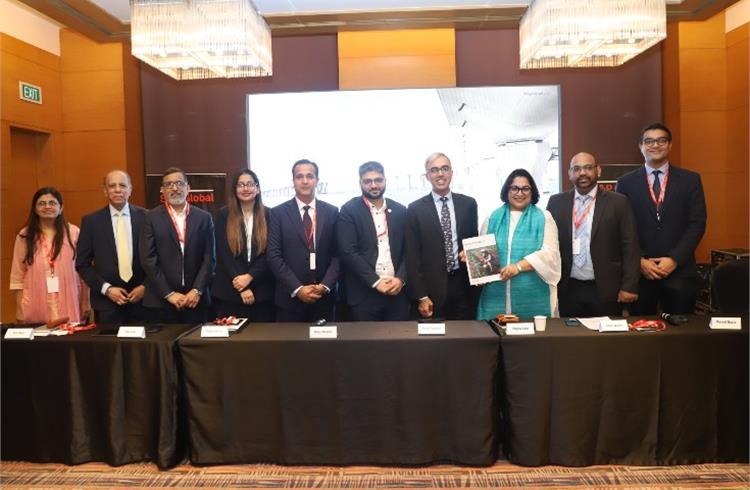
S&P Global Mobility has lowered India’s electric vehicle (EV) market penetration forecast for 2030, reducing it from 22% to 18.5%. Several challenges, including the slow adoption of electric passenger vehicles, underdeveloped charging infrastructure, and selective state incentives favoring hybrids, have contributed to this adjustment.
Challenges in India’s EV Adoption
One of the main reasons for the forecast revision is the slow uptake of electric passenger vehicles. Despite government initiatives to encourage EV adoption, the progress has been slower than anticipated. This has been further compounded by the lack of a widespread and efficient charging infrastructure across the country, which remains a critical barrier for potential EV buyers.
Another contributing factor is the approach of various states toward EV adoption. Some states have introduced incentives that lean toward hybrid vehicles rather than fully electric ones, resulting in fragmented growth across the country. The inconsistent policies and incentives are creating a patchwork system that favors certain types of vehicles over others, slowing the momentum of full electrification in India.
Rise of Hybrid Powertrains
Amid the challenges to full EV adoption, hybrid powertrains are gaining significant traction in India. Hybrid vehicles, which combine internal combustion engines with electric motors, are seen as a bridge between traditional fuel vehicles and fully electric ones. This trend, referred to as “powertrain pluralism,” offers a middle ground for consumers hesitant to make the full leap to electric vehicles.
Hybrid powertrains provide the flexibility of using both electric and fuel-based energy sources, making them an attractive option for many Indian consumers. This is especially true in areas where charging infrastructure is limited, as hybrids do not rely solely on electric power. The growing preference for hybrids could further slow the adoption of fully electric vehicles in the coming years.
Focus of Indian Automakers
Despite the rise of hybrid technologies, major Indian automakers such as Tata Motors and Mahindra are maintaining their focus on full electrification. These companies are avoiding a mixed-approach strategy and are investing heavily in developing fully electric vehicles to capture the growing demand for EVs in India. Their commitment to full electrification signals a long-term vision for an EV-dominated future, even as hybrids gain ground in the short term.
Tata Motors, in particular, has emerged as a leader in India’s EV market, with several electric models already on the road. The company’s strategy revolves around producing affordable electric cars that cater to the mass market, a crucial factor in driving widespread EV adoption. Similarly, Mahindra is working on expanding its electric vehicle portfolio, with plans to launch multiple new models in the coming years.
Decline of Traditional Fuels
As electric vehicles continue to gain market share, the demand for traditional fuels like gasoline, diesel, and compressed natural gas (CNG) is expected to decline. This trend is likely to be most pronounced in the mini-car segment, which has traditionally been dominated by fuel-efficient, low-cost vehicles.
The shift away from traditional fuels will have significant implications for the automotive industry, particularly for companies that rely heavily on the production of internal combustion engine vehicles. As more consumers transition to electric or hybrid vehicles, the demand for gasoline and diesel-powered cars is expected to decrease, forcing automakers to adapt their product offerings to meet the changing market dynamics.
Growth of Plug-In Hybrids
Plug-in hybrid electric vehicles (PHEVs) are also expected to play a key role in India’s transition to electric mobility. These vehicles, which can be charged via an external power source and operate on both electric and fuel power, are gaining popularity as an alternative to fully electric vehicles.
One of the driving forces behind the growth of PHEVs in India is the involvement of Chinese original equipment manufacturers (OEMs). Chinese automakers have successfully introduced PHEVs in their domestic market, and similar partnerships are emerging in India, where PHEVs are expected to follow a similar growth trajectory. The success of these vehicles in China serves as a blueprint for their potential in India, especially in segments where full EV adoption faces challenges.
Battery Electric Vehicles (BEVs)
Battery electric vehicles (BEVs), which rely solely on electric power, are at the forefront of the shift toward alternative powertrains in India. This trend is particularly evident in the two- and three-wheeler segments, where BEVs are leading the charge in terms of adoption. These smaller electric vehicles are well-suited to India’s urban landscape, where shorter commutes and lower price points make them more accessible to consumers.
The success of BEVs in the two- and three-wheeler segments is encouraging, as it demonstrates the viability of electric mobility in India. However, the same level of success has yet to be replicated in the passenger vehicle segment, where challenges such as cost, range anxiety, and infrastructure limitations continue to hinder widespread adoption.
Global EV Adoption: India Lags Behind China, U.S. Comparison
India’s EV market trajectory closely mirrors that of the United States, where challenges in non-electric segments have slowed the pace of adoption. In contrast, China remains the global leader in electric vehicle adoption, with EVs accounting for 60% of new car sales.
The U.S., however, lags significantly behind China, with less than 10% of new car sales being electric. India, facing similar barriers to full electrification as the U.S., has been slow to catch up to China’s rapid growth. Factors such as infrastructure, policy support, and consumer acceptance are key to accelerating India’s EV market in the coming years.
Conclusion
While India’s electric vehicle market is growing, the revised forecast from S&P Global Mobility highlights the challenges that remain in achieving widespread adoption by 2030. The slow uptake of electric passenger vehicles, underdeveloped charging infrastructure, and the growing popularity of hybrid powertrains are all contributing factors to the adjusted outlook.
However, the commitment of Indian automakers to full electrification and the success of BEVs in the two- and three-wheeler segments offer hope for the future of electric mobility in India. The rise of plug-in hybrids, particularly through partnerships with Chinese OEMs, adds another layer of complexity to the market, offering consumers multiple pathways to transition away from traditional fuels.
As India continues its journey toward a cleaner, more sustainable automotive future, overcoming these challenges will be critical to reaching the country’s long-term goals for electric mobility.
Article By
Prashant Sharma
Blog
Kia Carens Clavis EV: Kia’s New Electric MPV Set to Launch on July 15
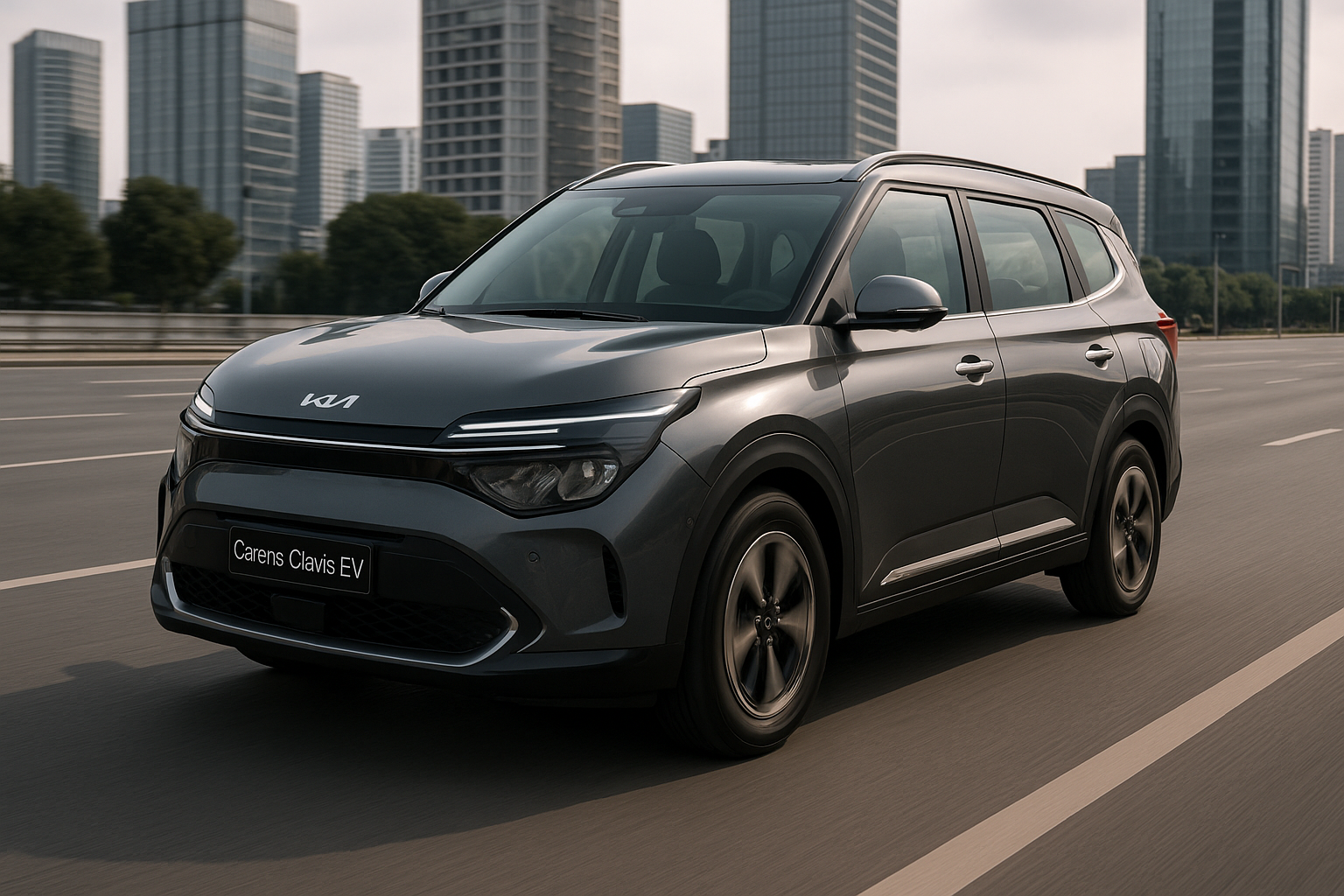
Kia’s New Electric Ride: The Carens Clavis EV
So, here’s the scoop: Kia is about to launch something pretty exciting — the Carens Clavis EV, which is an electric version of their popular Carens MPV. And trust me, it’s one to keep an eye on.
Kia’s making a bold move into the electric vehicle (EV) market with this one. With seven seats, a 500 km range on a single charge, and some pretty impressive tech, this car is aiming to make a mark. It’s expected to launch around July 15, 2025, so we don’t have long to wait!
Why the Carens Clavis EV Is a Game-Changer for Families
The thing about this car is that it’s designed for families. If you’ve ever felt like electric cars are just for single people or city commuters, Kia is here to prove that’s not true. With the Carens Clavis EV, you get the perfect mix of space and eco-friendly driving.
The big selling point? The 500 km range. This is going to be a huge deal for families who want to go on road trips without constantly worrying about finding a charging station. That range is perfect for weekend getaways or long drives with the family, especially when you’re going to be on the road for a while.
What Makes the Carens Clavis EV Stand Out?
Kia has thought about comfort here. This is a family car, so the three rows of seats are perfect for bigger families or anyone who’s constantly shuttling kids and their friends around. Plus, with seven seats, you won’t be squished in the back.
And since it’s electric, it’s going to be a smooth, quiet drive. No more engine noise — just the quiet hum of the road, making your ride that much more peaceful.
Inside, expect high-tech features like smart infotainment systems, driver-assist technology, and all the cool gadgets that make driving easier and more fun. So whether you’re in the city or driving out for a weekend, it’s going to feel like a premium experience.
Is It Easy to Drive? You Bet!
One thing we know for sure is that the Carens Clavis EV will be easy to drive. Electric cars are known for being super smooth and responsive, and this one will be no exception. With instant torque, you get smooth acceleration, which means no lag when you hit the gas. Whether you’re in traffic or cruising down the highway, you’re going to have a blast driving it.
Plus, with the fast-charging features, you won’t be waiting around for hours to get back on the road. Kia seems to be thinking about the practical side of things, and that’s always a win when it comes to electric cars.
Who’s the Carens Clavis EV Perfect For?
If you’ve been eyeing an electric car but didn’t think you could find one that fits your family, the Carens Clavis EV might be your answer. It’s designed for families on the go who need space, comfort, and the eco-friendly perks of an electric car.
With the 500 km range and fast charging, this car isn’t just for short city trips. It’s made for long drives, too. Whether you’re going on a family road trip or just running errands around town, this car has you covered.
What’s Next for the Carens Clavis EV?
As the launch date of July 15 gets closer, there’s a lot of excitement building around this car. Kia is committed to offering a family-friendly electric vehicle, and with its range, tech, and performance, the Carens Clavis EV could be a major hit.
So if you’re looking for a spacious, family-friendly electric car, don’t forget to mark the launch date on your calendar. It might just be the perfect time to make the switch to electric.
Blog
Mercedes-Benz CLA Electric: The Luxury Electric Sedan You’ve Been Waiting For
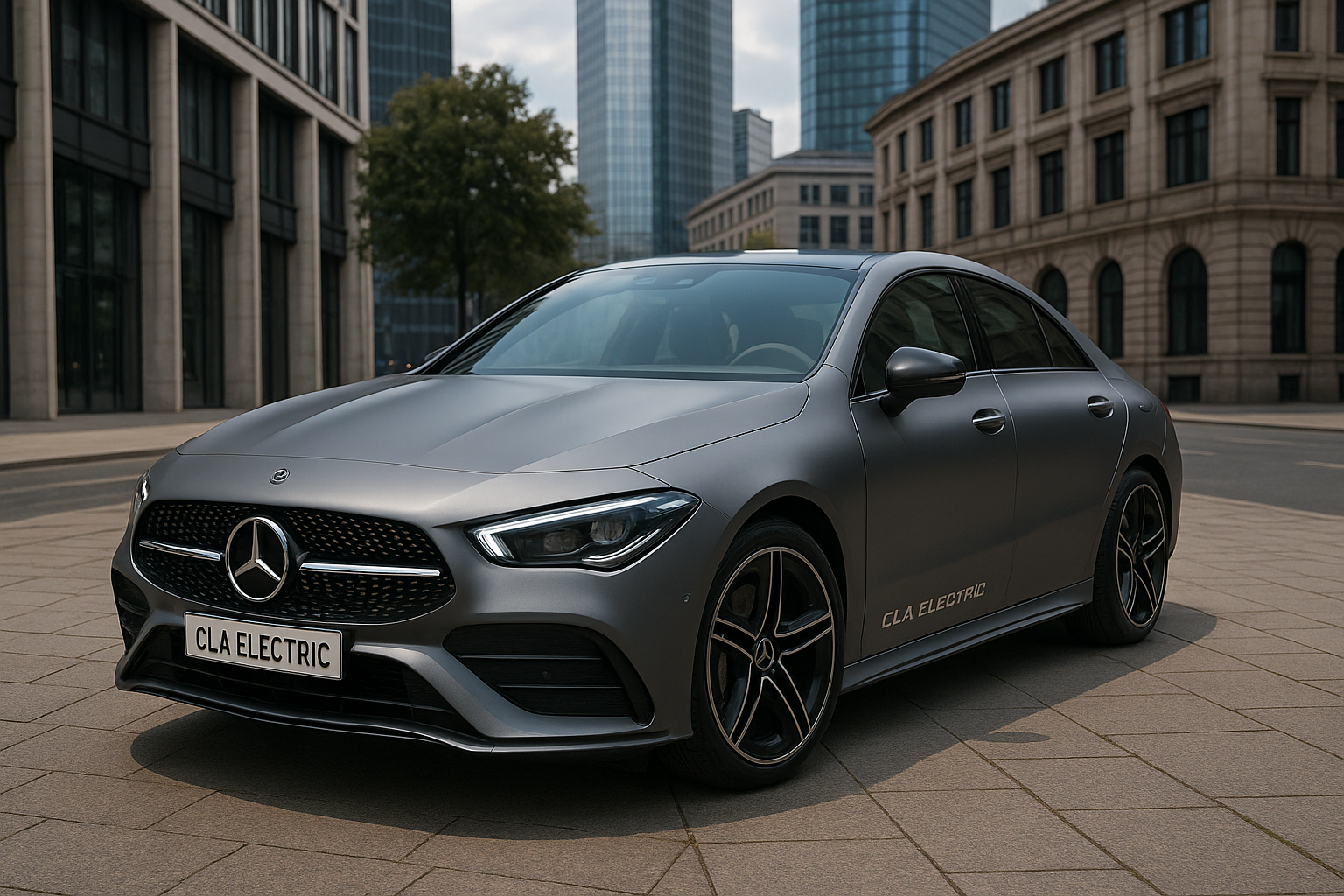
Mercedes Brings Luxury to Electric Driving
Mercedes-Benz has always been the go-to brand for luxury cars. Now, they’re bringing that same high-end experience to electric vehicles with the CLA Electric. Set to be released in July 2025, this electric sedan is going to offer the kind of style, performance, and comfort that Mercedes is known for — but with an eco-friendly twist.
If you’ve been dreaming of an electric car that doesn’t compromise on luxury, performance, or looks, the CLA Electric is going to make all of that possible.
Why the CLA Electric is a Big Deal
The CLA Electric is not just another electric sedan. It’s Mercedes—and we know that means top-of-the-line luxury with every drive. From what we’ve seen so far, this car is expected to combine sleek, futuristic design with a comfortable, high-tech interior, while still delivering the powerful performance you expect from a Mercedes.
The best part? It’s fully electric. That means you can enjoy the luxury of a Mercedes while driving a car that’s not contributing to air pollution or burning fuel. For people who want the best of both worlds — an eco-conscious car that still feels premium — the CLA Electric could be the perfect fit.
Performance You Can Count On
When you think of Mercedes, performance is never far behind. And the CLA Electric is no exception. While we don’t have all the specifics yet, it’s safe to say this car is going to be fun to drive. Expect smooth acceleration, a nice driving range, and zero emissions.
If you’re someone who loves the thrill of a smooth ride but also wants to feel good about your impact on the environment, this car delivers. Plus, with fast-charging capabilities, you won’t spend your life waiting around at charging stations. More driving, less waiting — that’s what the CLA Electric is all about.
A Luxurious Interior with All the Right Features
Mercedes is known for making interiors that feel like a luxury living room, and the CLA Electric will be no different. Inside, you can expect plush seating, top-quality materials, and an advanced infotainment system that’s easy to use and packed with features.
The digital displays and driver-assistance technologies will make sure every drive is safe, smooth, and enjoyable. Whether you’re running errands in the city or going on a road trip, you’ll feel relaxed and connected at all times.
Going Green, in Style
The CLA Electric isn’t just a luxury car; it’s a step toward a cleaner, greener future. By going electric, Mercedes is giving us a way to reduce our carbon footprint without sacrificing the driving experience. For people who want to make a positive environmental impact but don’t want to give up on luxury, this is the car to look out for.
With more and more people wanting to drive electric, the CLA Electric is Mercedes’ way of saying, “We can do both — luxury and sustainability.”
What’s Next for the CLA Electric?
We’re all looking forward to seeing the CLA Electric in action once it hits the market. It’s Mercedes’ big step into the luxury EV segment, and if the early buzz is anything to go by, it’s going to be worth the wait. The CLA Electric promises to set a new standard for what a luxury electric sedan should be.
If you’re someone who’s been waiting for a high-performance, stylish, and sustainable electric vehicle, the CLA Electric should be at the top of your list.
The CLA Electric Is Almost Here — Are You Ready?
If you’ve ever dreamed of owning a luxury electric sedan that blends high-end style, performance, and eco-friendly technology, then the Mercedes-Benz CLA Electric is exactly what you’ve been waiting for.
With its sleek design, advanced features, and eco-conscious engineering, this car is going to turn heads when it hits the streets. Keep an eye out for the official launch in 2025 — the future of driving is here, and it’s electric!
Article By
Sourabh Gupta
Blog
India’s EV Market Heats: More Players, More Competition
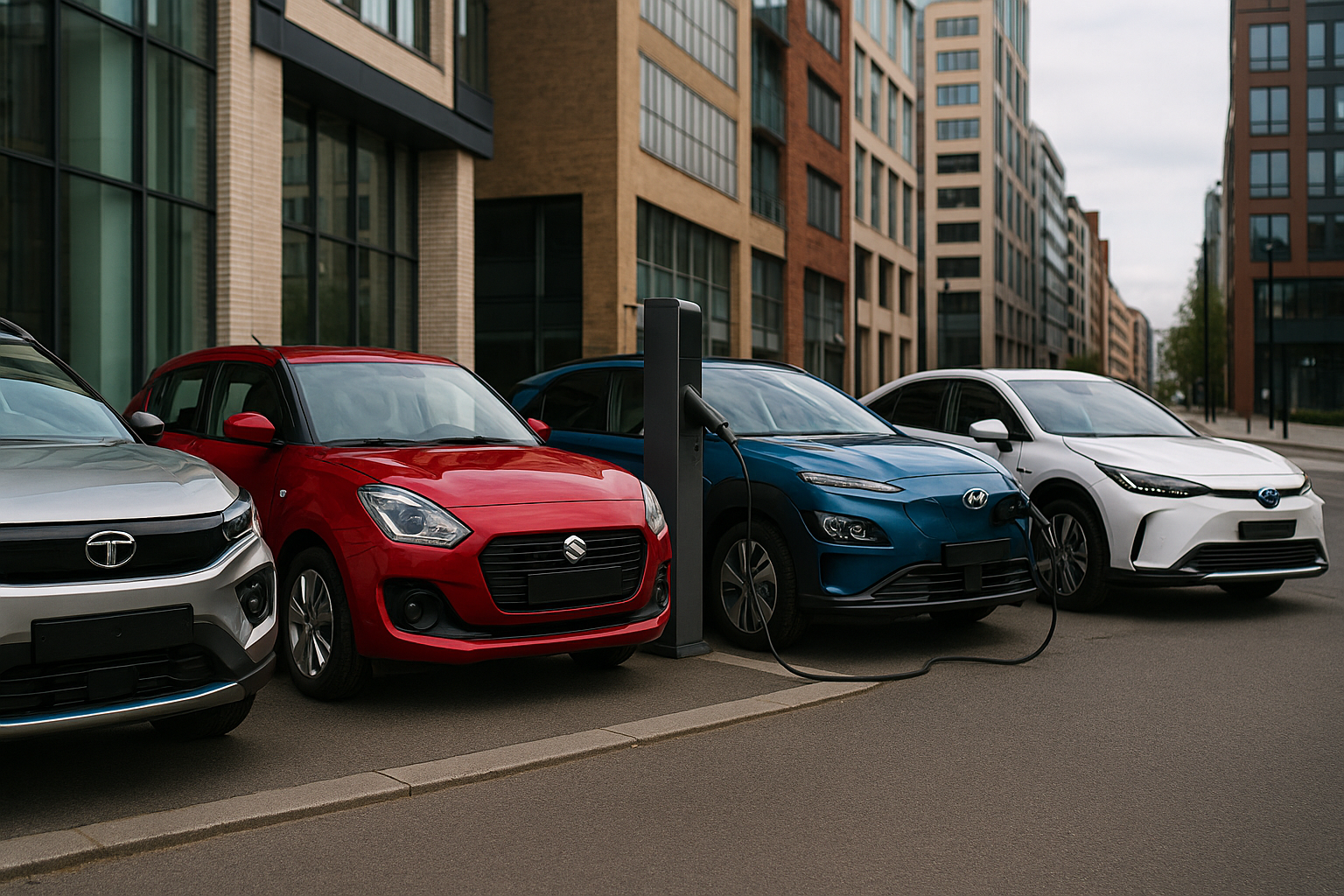
The Electric Vehicle Battle Is Just Getting Started
You know how things are changing fast with electric vehicles here in India? Well, it’s no longer just a couple of companies in the game. Tata and Mahindra have been leading for a while, but now Maruti, Toyota, and Hyundai are jumping in too. It’s turning into a proper race, and that’s great news for anyone thinking about buying an EV.
More players mean more choices, and when companies compete, it usually means better deals and cooler cars for us.
New Entrants Bring Fresh Energy
Maruti Suzuki is like the go-to brand for most Indian families because their cars are affordable and reliable. Now, if they start selling EVs, it’s going to make electric vehicles a lot more reachable for everyday folks.
Then you have Toyota and Hyundai, which have been working on electric cars globally for years. They’re bringing that know-how to India, which means better technology and cars designed to handle our roads and conditions.
This fresh blood is going to push everyone to do better, which is a win for all of us.
What This Means for Consumers
For buyers, this is the best time to consider an EV. You’ll get a wider choice of vehicles — from simple and affordable models to fancy ones packed with features.
Also, with so many companies competing, expect better batteries that last longer, faster charging times, and prices that won’t scare you away.
Charging stations will become more common, making it easier to own and use an EV without stress.
Challenges for Established Players
Tata and Mahindra have done well so far, but now the heat’s on. They’ll need to keep improving their cars and customer service to stay ahead.
More competition means prices might get friendlier, and cars will keep getting better, which is good news for everyone.
The Road Ahead: A Win for India’s Green Future
All this competition will speed up EV adoption, which means cleaner air and less pollution.
With more companies investing in EVs, we’ll see more charging points, better batteries, and more jobs related to green technology.
The future looks electric, and it’s shaping up to be an exciting ride.
Article By
Sourabh Gupta
-

 Blog1 year ago
Blog1 year agoIndia’s Electric Vehicle Market Forecast to 2028 A Rapidly Growing Industry
-

 Blog12 months ago
Blog12 months agoMahindra BE 6 An Intense Move toward the Fate of Electric Versatility
-

 Blog1 year ago
Blog1 year agoTop 10 Electric Vehicles of 2024: A Comprehensive Guide
-

 EV news11 months ago
EV news11 months agoAmpere Magnus Neo Another Time of Electric Portability
-

 Blog1 year ago
Blog1 year agoTop 5 best electric vehicles Under $30,000: Affordable Choices for 2024
-
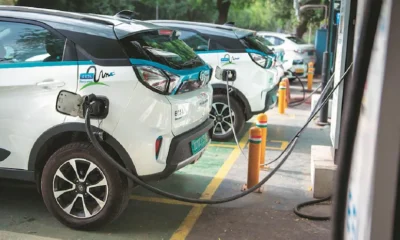
 EV news11 months ago
EV news11 months agoIndia’s EV Revolution Electric Cars to Outpace Petrol & Diesel in 2025
-

 Blog2 years ago
Blog2 years agoImpact of Electric Vehicles on the Environment and Pollution
-

 EV news1 year ago
EV news1 year agoOla Electric Offers Massive Festive Discounts on Scooters Starting at ₹50,000




